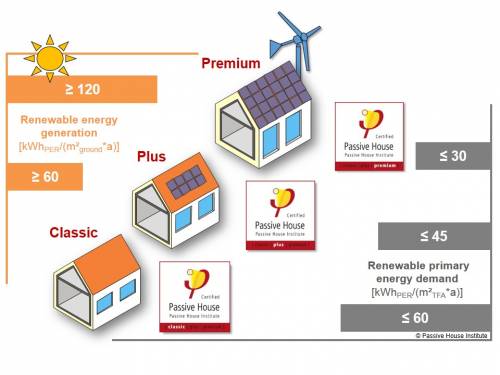You have probably heard about passive houses as well as the term ¨Passivhaus¨. It might come as a surprise that they are not the same concept and we are here to tell you all about it.
“In the first place it must be said that a passive house or one of nearly zero-energy can either be or not be a ¨Passivhaus¨ , whereas a ¨Passivhaus¨, is always a passive house which can either have or not the “Passivhaus” certification.
There are many advantages that come with a passive house which can be enjoyed: energy savings, thermal and acoustic comfort, cleaning of the interior air, lower carbon and volatile organic compounds emissions, but especially the health of those who live in it still without reaching the construction standards required to obtain the ¨passivhaus¨ seal of quality but obtaining major savings.
Obtaining the “Passivhaus” Certificate from the Passive House Institute (PHI), Germany, for a passive house can make the housing budget raise more than a 10%.
The requirements to achieve the Certificate are more demanding than those defined by the regulations (Technical Building Code) as a Nearly Zero Consumption Building. For example, the CTE in Spain establishes a maximum energy demand limit for heating/cooling three times higher, i.e. 45 Kwh/m2, while the ¨Passivhaus¨ standard requires a maximum demand limit of 15 Kwh/m2.
A LITTLE BIT OF HISTORY
Passive architecture
Passive architecture is as old as our present civilization. And it dates back to ancient Greece, Socrates being the first to write about this type of architecture.
One of the main characteristics of passive architecture is that it adapts to the climatic conditions of the environment and geographical area.
For Socrates, the definition of passive architecture is: “In south-facing houses, the sun penetrates through the porch in winter, while in summer the solar arc described rises over our heads and above the roof, so that there is shade.
The Roman Empire took on all that was good about Egyptian culture and part of this culture was the precepts of Greek architecture.
In the following centuries: the Middle Ages, the Renaissance and until the oil crisis of the 1970s, interest in this type of concept was lost in favor of more aesthetic concepts such as the golden ratio, composition, ornament, etc.
Passivhaus.
With the oil crisis of the 1970s, concern for the environmental aspects of building resurfaced, and interest in passive architecture and the use of solar energy as a form of free heating was reborn.
The Passivhaus certification standard was originated in May 1988 by Professors Bo Adamson of the Swedish University of Lund and Wolfgang Feist of the German Institute for Building and Environment in Darmstadt, Germany, after a very thorough study of the conditions for the Passivhaus certification. The physical, constructive and functional requirements of a house based on passive architecture. in 1994 the Passivhaus Institut (PHI) in Germany, from this moment on the compliance with the Passivhaus Certification standard and subsequent review by a Passivhaus certifying architect, will give the right to obtain the corresponding Passivhaus Certificate.

Wolfgang Feist: Director and founder (1994) of the Passivhaus Institut (PHI), Germany
CHARACTERISTICS OF PASSIVE HOUSES (Basic Principles)
Passive houses use the basic principles of bioclimatic architecture combined with high energy efficiency.
Maximum use is made of solar radiation and light with very high thermal insulation, good air tightness and mechanical air renewal by means of a double-flow ventilation system with heat recovery and air filters.
In the next article we will describe the basic principles of passive basic principles of passive houses.
- Bioclimatic design
- Building envelope with a high degree of thermal insulation
- Eliminate thermal bridges
- The airtightness
- Quality carpentry
- Controlled double-flow mechanical ventilation with heat recovery and air filters
- Energy efficiency, sustainability and profitability
- Comfort and health
BIBLIOGRAPHY .
www.caloryfrio.com
www.passivehouse-international.org
www.vanesaezquerra.com



